Royal Visit Board Game Review
What is Royal Visit?
Royal Visit is a compact two-player strategy board game where players compete to gain the favor of the King by pulling him closer to their own chateau. Think of it as a royal tug-of-war: you’ll play cards to manipulate the position of the King, his Guards, the Wizard, and the Jester—all while trying to outmaneuver your opponent before the game ends.
Originally released as Times Square and redesigned with stunning new artwork by Karl James Mountford, Royal Visit is one of Reiner Knizia’s most elegant abstracts. It’s a game of tight tactical choices where every card you play shifts the balance of power on the board. Do you pull the King forward with a well-timed Wizard? Block your opponent’s movement with the Guards? Or sneak in a last-minute victory using the Jester’s powers?
What seems like a light, almost whimsical game at first quickly reveals surprising depth. The pacing is brisk, the rules are simple, but the decision space is rich—every move matters, and timing is everything.
- Player Count: 2 players
- Playtime: 20–30 minutes
- Complexity: Light-Medium
- Mechanics: Hand management, tug-of-war, positional strategy
- Theme: Royal procession, courtly influence
With just a handful of cards and a few wooden pawns, Royal Visit distills the drama of strategic maneuvering into one of the most stylish, satisfying small-box board games on the market. Ready to impress the King? Let’s begin the audience with royalty.
A Royal Debut: A Reiner’s Standout
Me: A warm welcome to Royal Visit. It’s an honor to host a game of such noble lineage. You come from the mind of none other than Reiner Knizia—truly gaming royalty. How does it feel to carry his banner?
Royal Visit: Thank you, dear interviewer. Yes, I am one of Dr. Knizia’s designs, and I must say—his court is vast and cunning. His works are known for their razor-sharp mathematical cores. Each game pulls players in opposing directions, presenting tensions so tight they practically sing.
Me: He certainly has a reputation for elegance in simplicity. Some of his two-player titles are astonishing in their clarity. Lost Cities, for instance, turns hand management into a nerve-wracking exercise in restraint. Battle Line gives you poker-driven area control. Both are lean, focused, and undeniably brilliant.
Royal Visit: Quite so. Yet I offer something a touch different. You see, I may wear the Knizia seal, but I take a softer approach. While my mechanics are no less deliberate, my atmosphere is decidedly… hazier. Less razor-edge tension, more flowing courtly maneuver.
Me: That’s a surprising contrast! So where Lost Cities is about tight calculation and control, Royal Visit lets players waltz a little?
Royal Visit: Precisely. I am a procession, not a battle. A ceremonial game of influence, rhythm, and sway. But don’t mistake subtlety for softness—I still demand clever timing and sharp thinking. We’ll unravel more of my charms as we continue. After all, what is an audience with royalty if not a slow reveal of grandeur?

Royal Visit’s Subtle First Impression
Me: So let’s begin with how you play. What’s a player’s first impression when they open your regal rulebook?
Royal Visit: At first glance, I am deceptively simple. Two noble players act as rival lords, each seeking the king’s favor. Their aim? To draw His Majesty into their own chateau and secure the honor of a royal visit.
Me: A noble pursuit, indeed. And how does one achieve such a feat?
Royal Visit: On their turn, a player plays cards—each card tied to one of five figures: the King, his two Guards, the Wizard, and the Jester. A player may play any number of cards, provided they’re all of the same type, and use them to move that character accordingly. At the end of their turn, they simply draw back up to a hand of five.
Me: That sounds quite straightforward.
Royal Visit: It is. Delightfully so. And that is where my brilliance lies. At first, players may feel things are a bit too casual, too light—like there isn’t much beneath the surface. But once the dance begins, the complexity reveals itself.
Me: So the depth isn’t immediate?
Royal Visit: Precisely. The board becomes a five-lane tug-of-war, but only one rope may be pulled per turn. Each character’s movement affects the others in subtle ways, often balancing or disrupting the courtly procession.
Me: So it’s not just a matter of pulling harder—it’s knowing where to pull, and when?
Royal Visit: Just so. The procession always teeters on the edge of equilibrium. One misstep, and the whole royal court may tip in your opponent’s favor. Welcome to my parlor. Shall we continue?

Unfolding Layers of Strategy – The Emergent Brilliance of Royal Visit
Me: You seem rather… composed at first glance. Some might even say a bit too polite. What’s really going on beneath your velvet cloak?
Royal Visit: Ah, but that’s precisely the charm. I unfold. As players become more familiar with my courtly procession, they begin to see just how dynamic I am. The gameplay doesn’t overwhelm you from the outset—it rewards observation and repeated play.
Me: Can you give us an example of this evolution?
Royal Visit: Certainly. Very early on, players begin to notice simple patterns: the Wizard’s teleportation is potent, the Jester rushes other figures forward with startling speed, and the Guards act as sentries, hemming in the King. All of these are obvious powers on the surface.
Me: But there’s more to it, isn’t there?
Royal Visit: Far more. Each piece gains or loses value based on timing and context. Take the King, for instance. A single card for him might feel weak. But two cards? That’s a full royal procession. If you time it right, you can shift the entire line—Guards, King, and all—onto your side of the board in one sweeping motion. It’s not just a play; it’s a statement.
Me: And that Crown token?
Royal Visit: Ah, yes—the subtle jewel of tension. At first, the secondary victory condition of pulling the Crown into your chateau might feel like a footnote. But once it’s advanced, it becomes a looming threat. Your opponent must now split their efforts—not only stalling your momentum, but dragging the Crown back to center. It’s not just strategic—it’s psychological warfare in silk gloves.
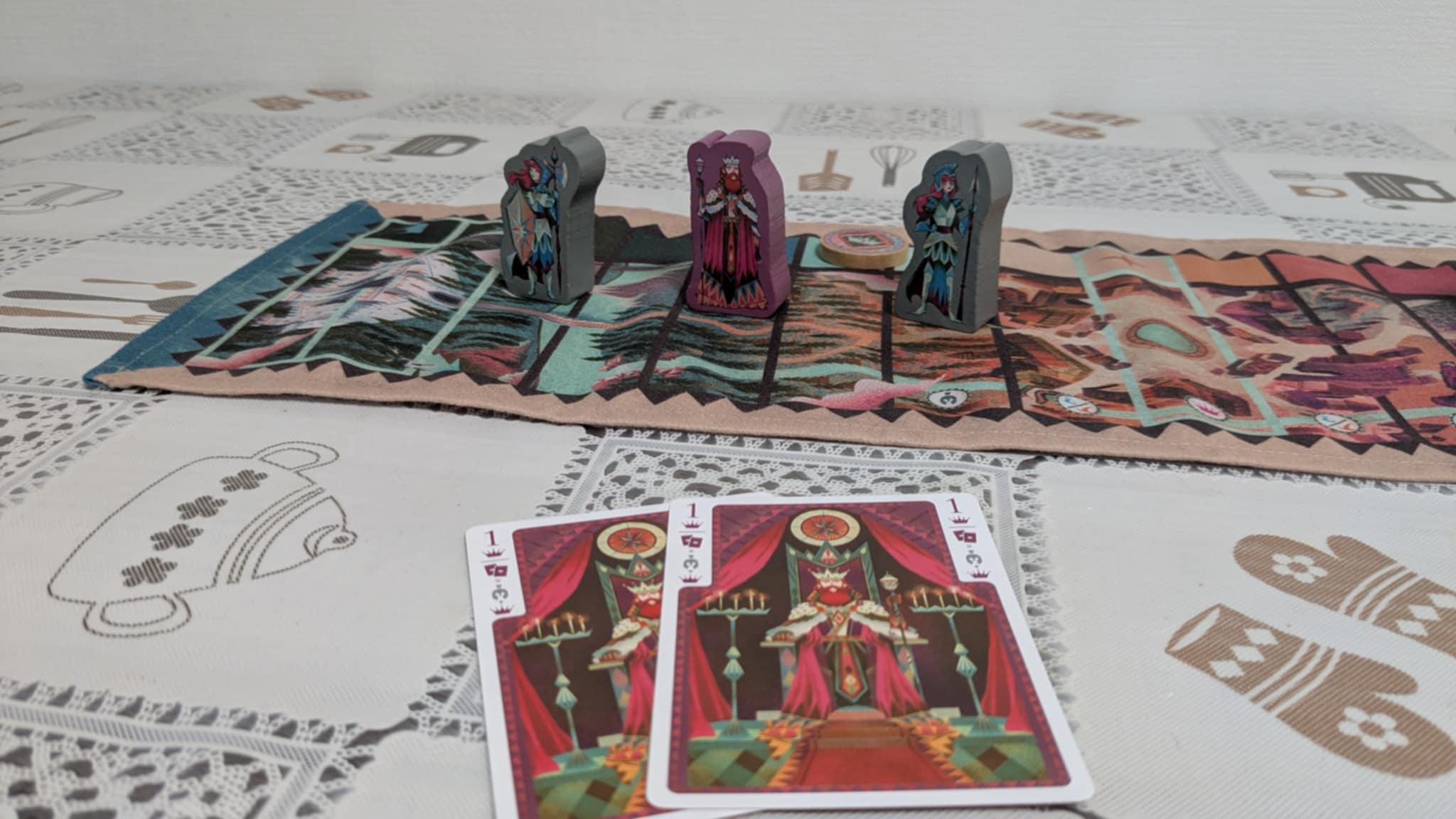
Master of Momentum – The Wizard and Royal Visit’s Hidden Depth
Me: That Crown mechanic really seems like a subtle masterstroke. Do you have any other examples of that hidden depth?
Royal Visit: Oh, absolutely. Allow me to shine the spotlight on one of my most enigmatic characters: the Wizard.
Me: A teleporting mage in a courtly tug-of-war?
Royal Visit: Yes, and he’s the perfect embodiment of my emergent design. His ability to skip a turn instead of playing cards might seem like a novelty at first—perhaps a way to delay, to catch your breath. But the moment players realize what that truly enables… the game transforms.
Me: What exactly makes it so potent?
Royal Visit: Let’s say the Wizard reaches your chateau. A simple enough move, but here’s the twist: when any piece lands there, you pull the Crown token one step closer to victory. Now, if you choose not to play any cards and simply pass with the Wizard already in position—he doesn’t leave. You draw the Crown again next turn.
Me: And if another piece, say a Guard, is also there?
Royal Visit: Then the tension multiplies. The Crown advances two steps. Your opponent is now in a bind—should they pull back the Wizard? The Guard? Both? Doing so costs tempo and resources. And if you’ve been clever, you’ll have the cards to pull those pieces right back into place.
Me: That’s downright devious.
Royal Visit: That’s strategy, my friend. And one more secret—passing with the Wizard also lets you bank cards for a stronger turn later. It’s tempo control, pressure-building, and hand optimization all in one. I may look delicate, but underneath the silk and ceremony, I am a game of subtle brinkmanship.
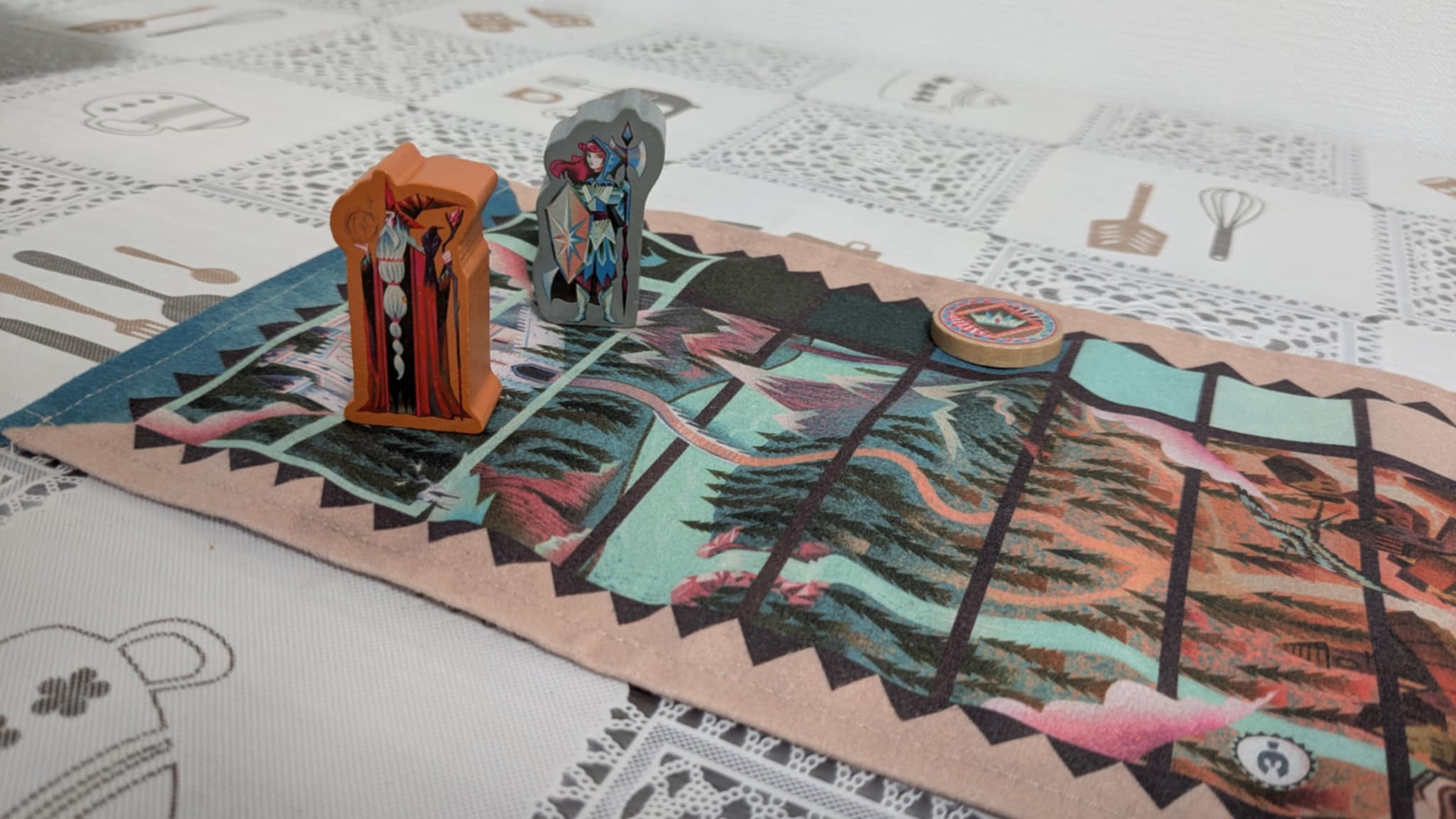
Dueling Desires – The Fuzzy Tug Between Plans and Pressure
Me: One thing I’ve noticed, Royal Visit, is that your style feels a little… softer than most of Reiner Knizia’s works.
Royal Visit: Indeed. While many of Lord Knizia’s designs are crystalline in their logic—precise, sharp, mathematical—I prefer to waltz in the space between clarity and intuition. I offer tension, not through rigid calculation, but through a delicate balance of psychology and probability.
Me: That’s quite the contrast. How do you do it?
Royal Visit: Imagine a player who’s played me two or three times. They’ve begun to notice certain card combinations—perhaps how a pair of Jester cards can suddenly vault a Guard into a critical space, or how the Wizard’s power syncs beautifully with certain layouts.
Now, this player begins to wait. They hold cards. They try to sculpt the board state to make that perfect turn happen. But I don’t wait quietly. The opponent has their own agenda. They’re playing cards, disrupting plans, pushing the King in the other direction.
Me: So then what?
Royal Visit: The moment of truth arrives. Do you burn those precious cards now, perhaps ineffectively, to stop the bleeding? Or do you hold out, bluff, adapt? My gameplay is full of these quiet negotiations between patience and pragmatism.
Me: That must create a unique kind of tension.
Royal Visit: Precisely. Every decision is a question of timing versus tempo, of probability versus presence. You’re not calculating your way to a win—you’re sensing it, reading your opponent, and seizing the moment when the balance tilts just enough. That’s my elegance: not in numbers, but in nuance.
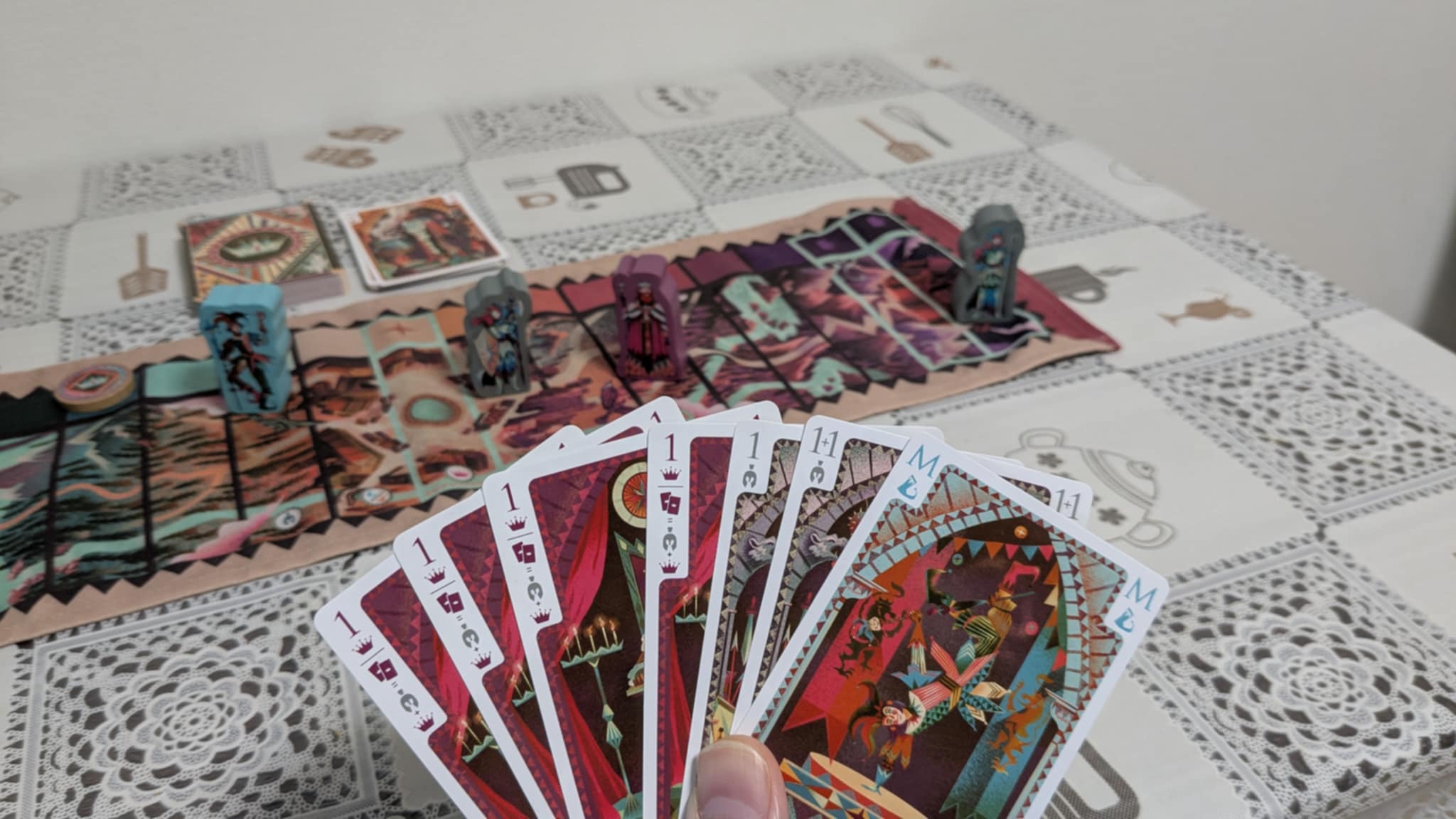
The Glacier Shifts – Royal Visit and the Art of Momentum
Me: Royal Visit, your pacing is quite unusual. You start off feeling serene—almost relaxed—but by the end, it’s a full-on tug-of-war.
Royal Visit: Ah yes, the tempo of my courtly dance is slow and deliberate at first, but only to lull you into a false sense of comfort. The truth is, I am a game of momentum—a delicate one.
In the opening, things are often calm. A Guard is moved here, the King nudged there. A few early plays to feel the rhythm. One player tugs a piece toward their château, the other pulls it back. Balance is maintained—but not forever.
Me: So when does it shift?
Royal Visit: When the deck thins. Played cards shift probabilities, and suddenly, every choice carries more weight. The court’s balance begins to tip. One player might find themselves just steps from victory, the other scrambling to respond. But then—ah!—my secret trick: the reshuffle.
Me: A full deck reshuffle? That’s unexpected.
Royal Visit: Indeed. A masterstroke of tension. It resets the clock just enough. A player who seemed doomed may draw the cards they need to survive—or strike back. The game doesn’t always allow a comeback, but the chance of one adds drama. It’s a calculated shift in momentum that keeps both players invested until the final turn.
Me: So it’s about adapting to the moment?
Royal Visit: Precisely. If you cling too tightly to your perfect sequence or wait too long to act, you may miss your window. I reward players who read the flow of the game, sense the swell of momentum, and steer with finesse. Because once the glacier shifts, it doesn’t stop—it crashes.
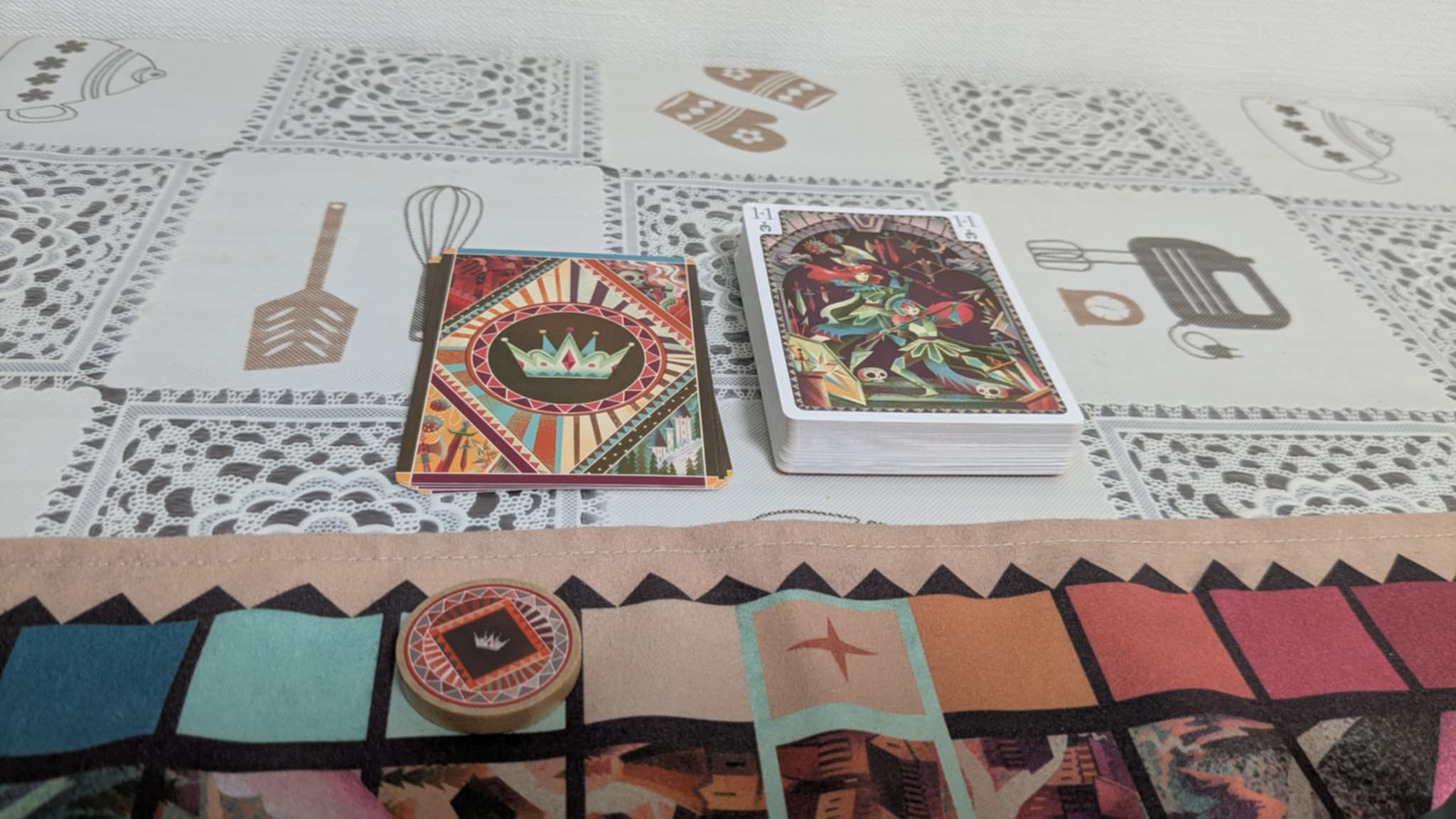
Polishing the Crown – Drawbacks of Royal Visit
Me: Every crown has its tarnish. Any imperfections in your design or presentation, Royal Visit?
Royal Visit: Even the most elegant of games must acknowledge its minor flaws. My components—while undeniably beautiful—do present some practical challenges. Take my cloth board, for instance. It adds tactile charm, yes, but when rolled up inside my compact box, it emerges with creases. These folds can make the board slightly unruly on the table, disrupting the visual harmony I so strive for.
Me: A shame for such a regal presentation.
Royal Visit: Indeed. Then there are my cards. They are luxuriously large, which enhances clarity and presence, but at a cost—shuffling them is no easy feat. A less-than-thorough shuffle might result in drawing too many of the same character in sequence, skewing the gameplay and dampening the strategic richness.
Me: Anything on the gameplay side?
Royal Visit: Ah, a subtle point. You see, I am a remake of an older title—Times Square—and my brilliance is not immediate. I unfold gradually, like court intrigue. For players expecting instant impact, I may seem overly casual or muted on first encounter. Only with a few plays does my strategic depth become apparent. This may cause some to dismiss me prematurely.
Me: So you’re a hidden gem, misunderstood at first glance.
Royal Visit: Precisely. My minor flaws are outweighed by the elegance of my design. But as with all gems, I require a bit of polish and patience to truly shine.
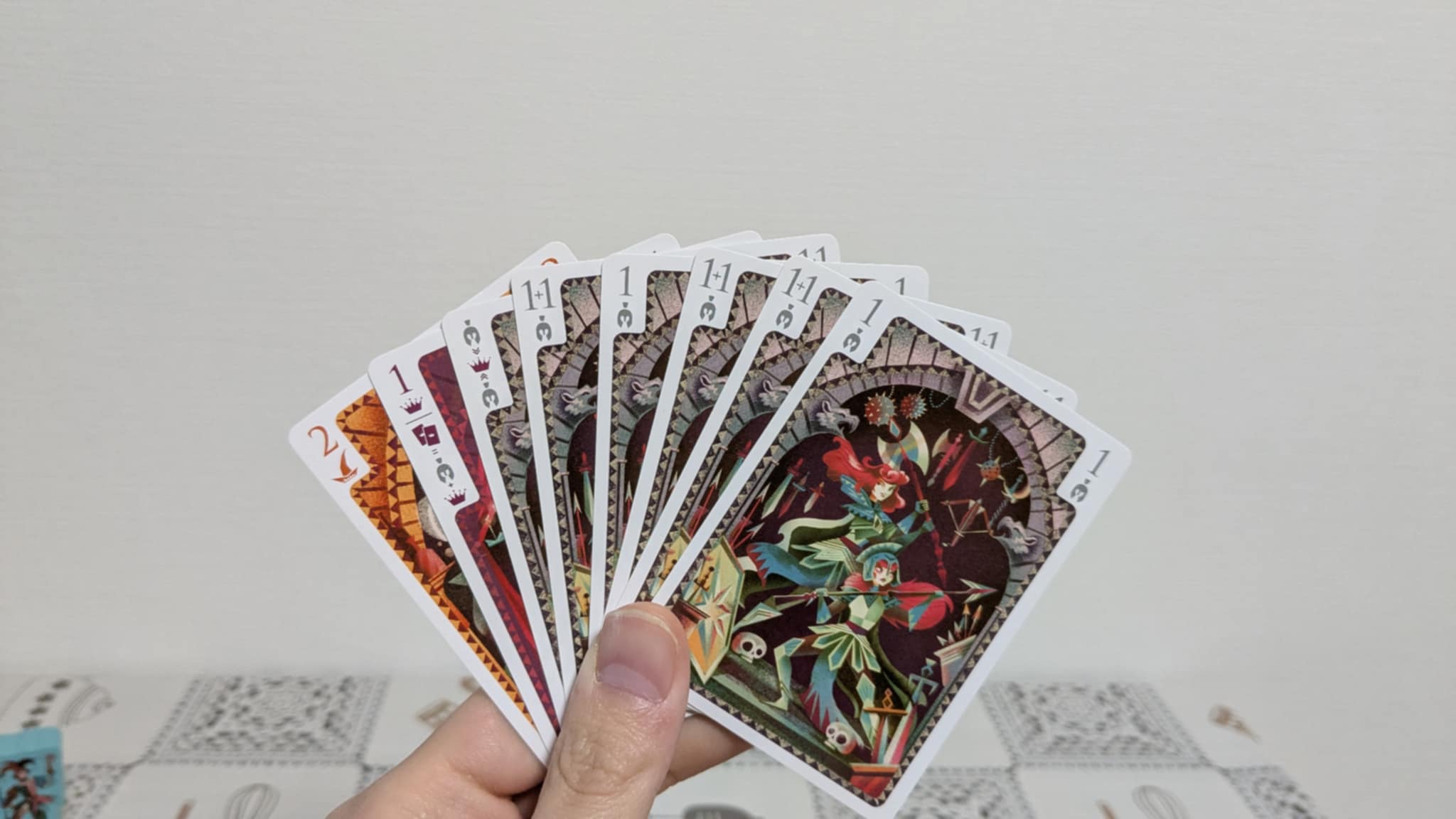
Final Verdict: Royal Visit Bids Farewell, But Not Forgotten
Me: Your Majesty, it’s been an honor having you here today.
Royal Visit: The honor is mine. I don’t often make appearances, but when I do, I prefer to leave an impression.
Me: That you did. Before we say goodbye—any parting words?
Royal Visit: Indeed. I may not shout my brilliance from the rooftops, but those who take the time to understand me will find a game of subtle tension, elegant momentum, and decisions that bloom with experience. I’m not the loudest guest in the two-player court, but I dare say I’m among the most refined.
Me: So you’d recommend yourself to—
Royal Visit: To those who enjoy discovery. Who enjoy plans that shift, games that whisper rather than roar. I reward attention, not aggression. Patience, not flash.
Me: And we’re lucky to have you. In a crowded royal court of 2-player games, you stand tall, cloak flowing, crown glinting in the light. Thank you for visiting us.
Royal Visit: Thank you. May your court always be in balance.
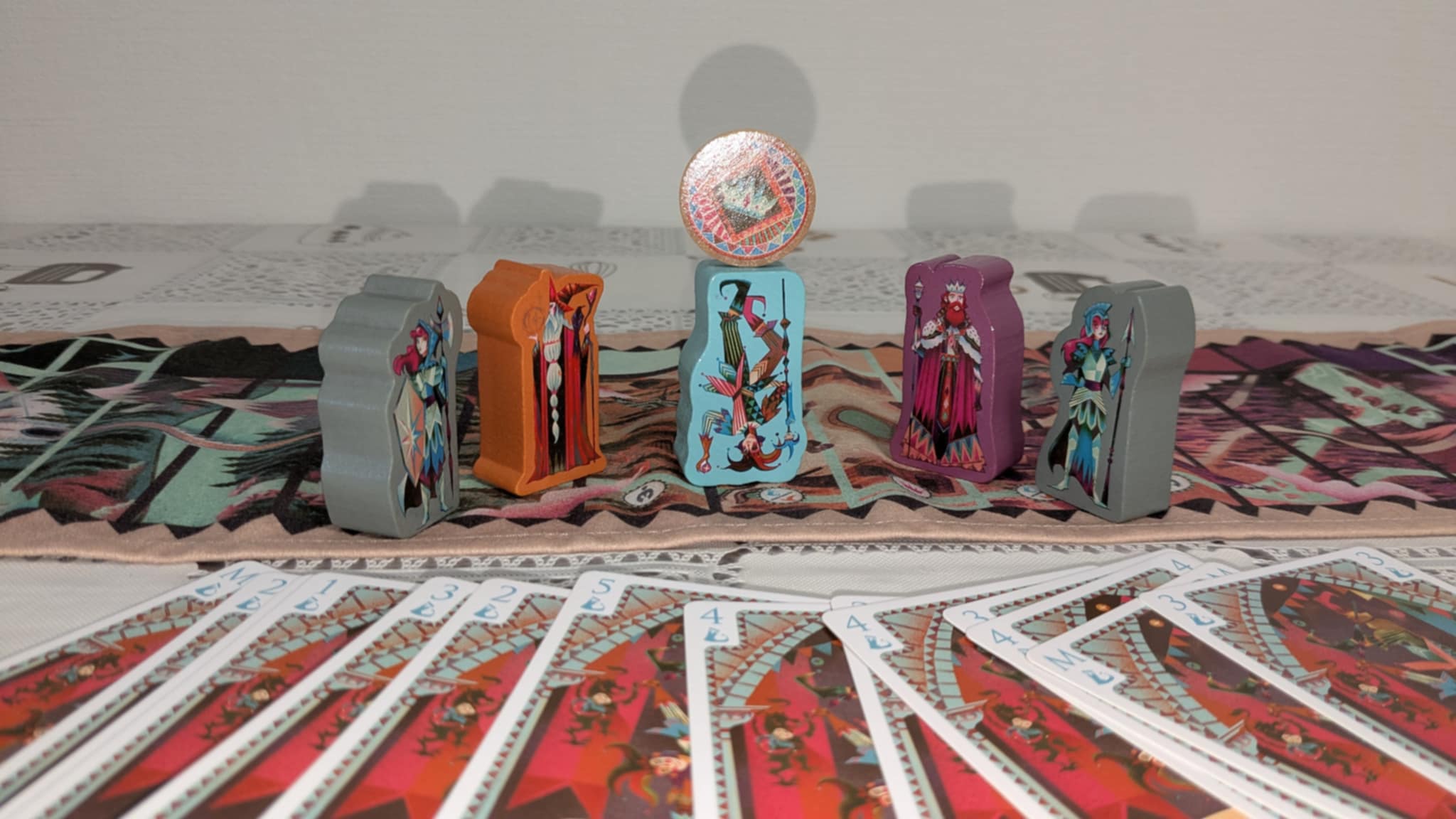
Conclusion
Royal Visit is one of those rare two-player games that doesn’t need flash or flair to shine. Its brilliance lies in restraint, in subtle momentum shifts, in the kind of emergent strategy that reveals itself only after a few plays—and rewards you more each time you return. It’s a hidden gem, designed by a master, wrapped in elegance, and perfect for those who crave slow-burn brilliance over instant gratification.
Alternative recommendation:
Another 2-player gem from Reiner Knizia: Lost Cities—tense, sharp, and unforgettable. If you want to explore his tile-laying expertise, Through the Desert is a distilled classic that deserves its place in the hall of fame. For more tug-of-war style skirmishes, Blitzkrieg and The Lord of the Rings: Duel for Middle-earth bring plenty of tight battles and fast decisions.
Final Rating: 9.5/10
✅ Pros:
- Simple to learn, easy to teach
- Emergent gameplay that deepens with every play
- Fast and elegant setup
- Extremely rewarding to revisit (or re-Royal Visit, one might say)
❌ Cons:
- Cards are slightly awkward to shuffle
- Not immediately clear why it’s great

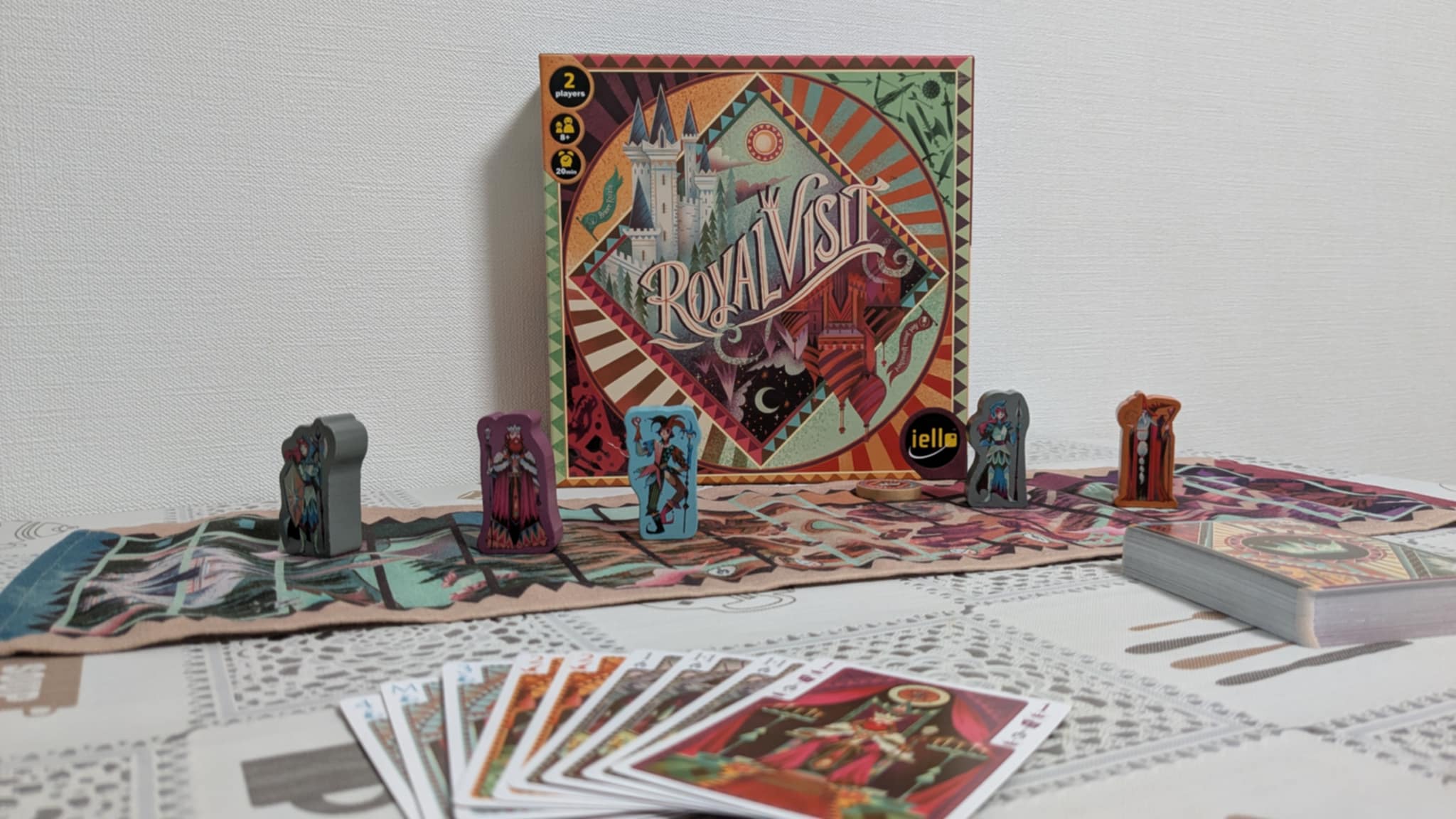


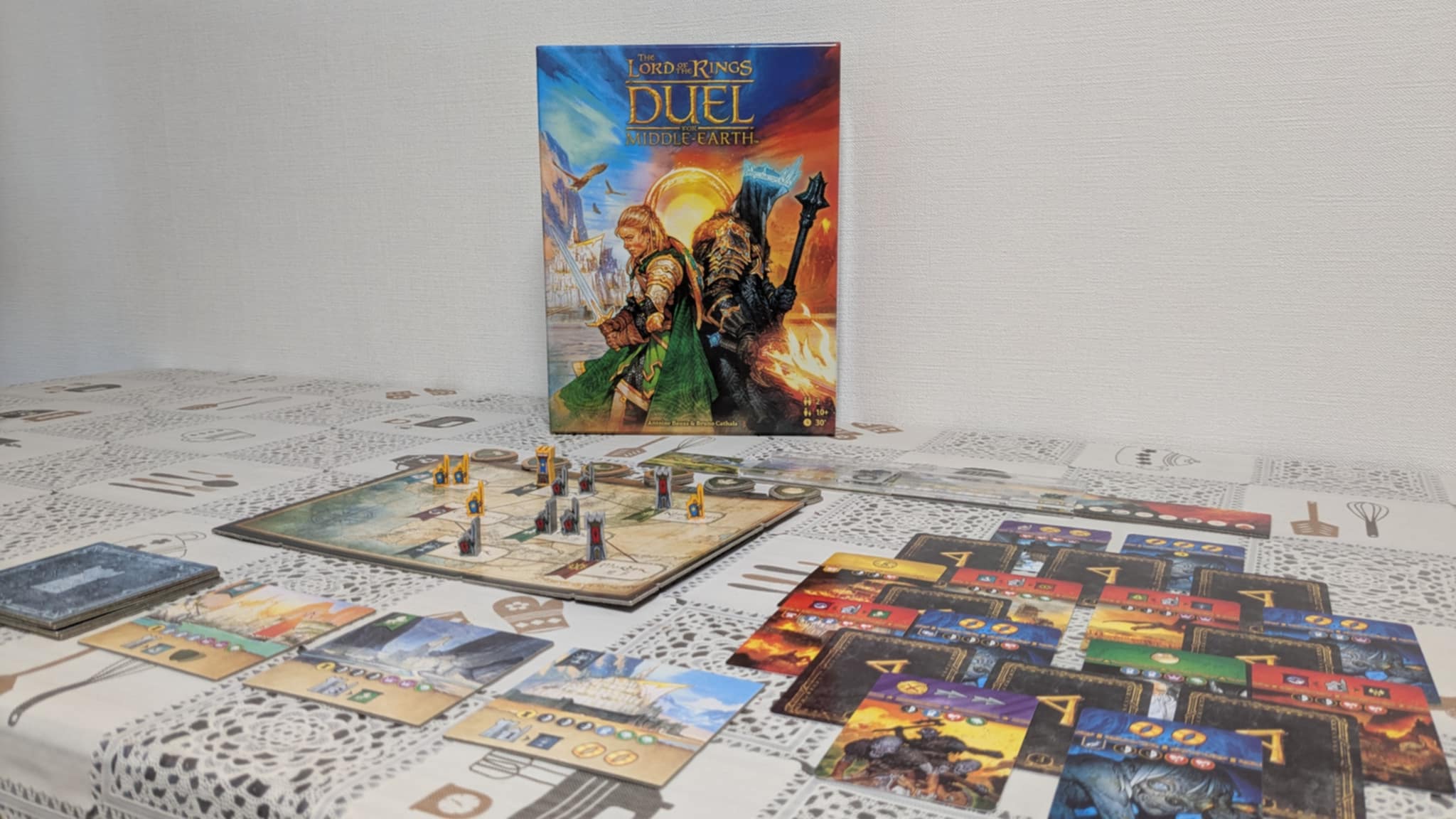
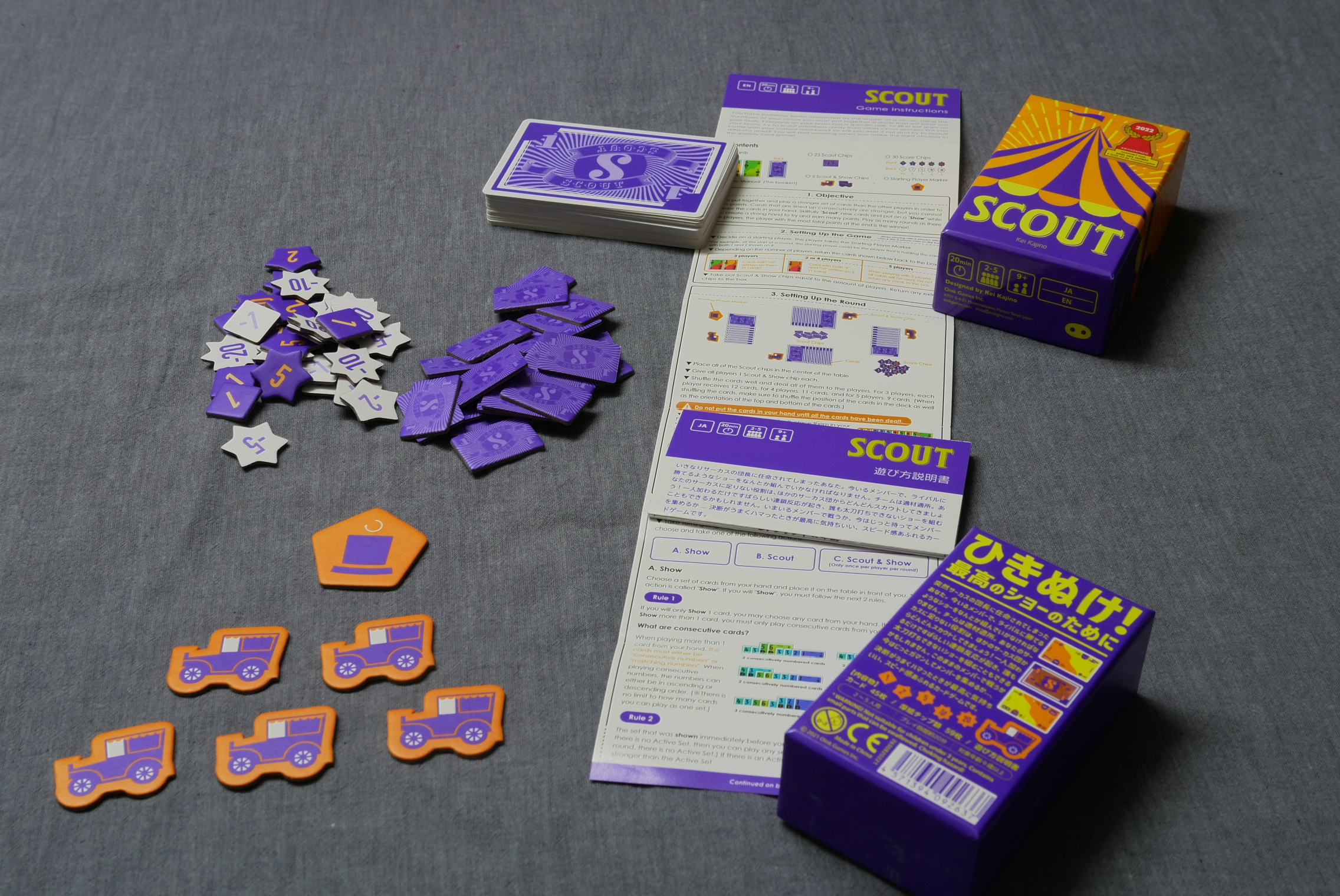
Leave a Reply